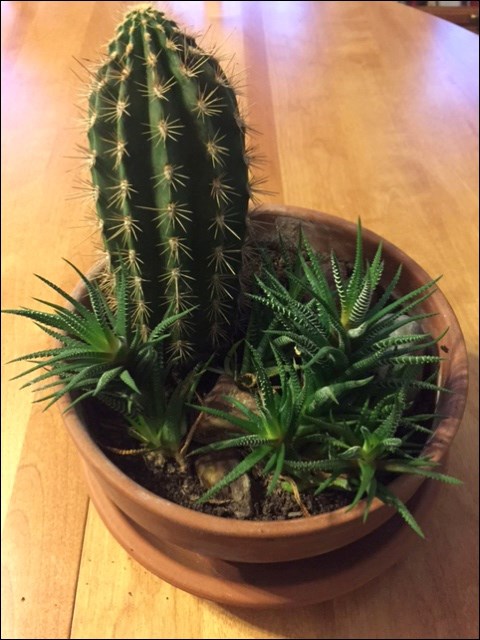The humidity levels in our homes in winter are often compared to levels in the desert. So why not grow desert cacti and succulents as houseplants?
These can be ideal houseplants if their requirements are kept in mind: not all cacti and succulents are desert plants. Some grow in the forest in the upper canopy of trees.
Most cacti have a rounded form and spines. Forest cacti tend to trail and have large flowers, like the orchid cactus, which does well in a hanging basket.
Succulents have thick fleshy leaves, and many of them are also trailing plants, like the burro’s tail plant.
Haworthia and aloes are easy-to-grow succulents that grow upright and produce many offsets, which are easy to root to share with friends.
Both cacti and succulents require bright light, enjoying a south- or west-facing windowsill. They also enjoy heat in summer, but may need some curtain-filtering protection if the south-facing windowsill gets too hot. In winter they like cooler temperatures, so again the windowsill is a good location, being cooler than the rest of the house.
Although they store water, it is important to water deeply rather than giving them a quick pass with the watering can.
In summer they require regular watering, allowing the soil to dry between. In winter they are taking a rest and only need to be watered about once a month.
Fertilize once every three weeks during summer, the growing season, but make sure to water first and then water with the fertilizer. Watering a dry plant with fertilizer burns the roots.
Only repot when essential, as cacti and succulents are more likely to bloom when slightly pot-bound. They require a gritty, well-draining soil.
A layer of grit on the surface of the potting medium is attractive and keeps the crown dry. Stones and driftwood can also be added to a container of cacti and succulents to create an attractive display.
A suitable container is shallow with drainage holes. A terracotta container is a good choice because it breathes and dries out faster. They come in many attractive shapes and sizes.
Cacti and succulents have very few pest problems. They are susceptible to mealy bugs, which look like little bits of cotton that move. These are easily treated with rubbing alcohol. Treat the visible bugs with a cotton swab dipped in rubbing alcohol, and pour alcohol over the soil to kill any eggs.
With proper care cacti and succulents make excellent houseplants, and can handle a bit of neglect.
Horticulturalist Mary Wright has lived in Denare Beach for over 20 years. She shares her passion for
gardening with Flin Flon readers in The Reminder.




